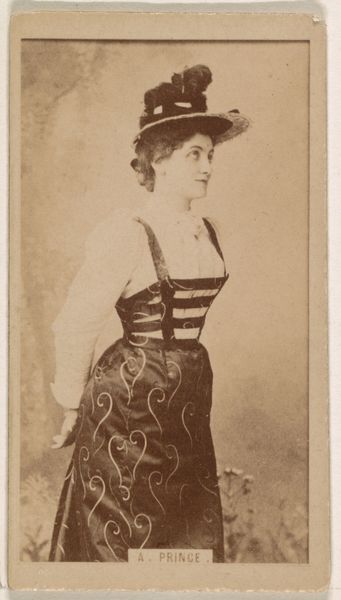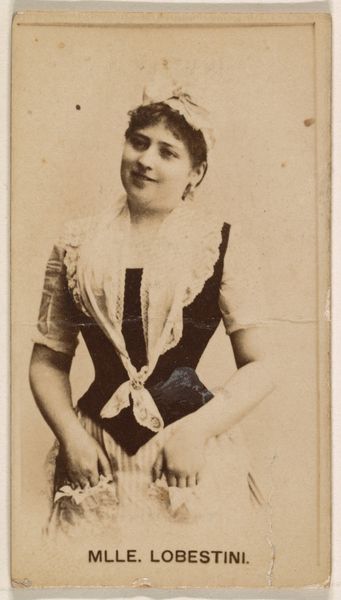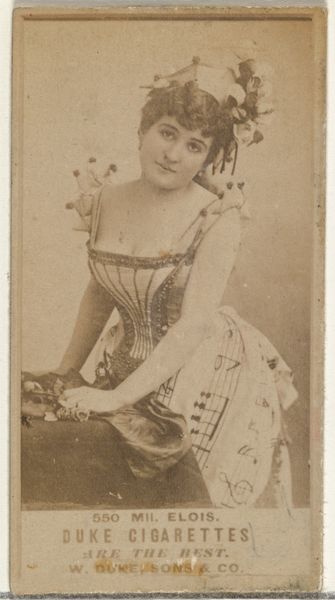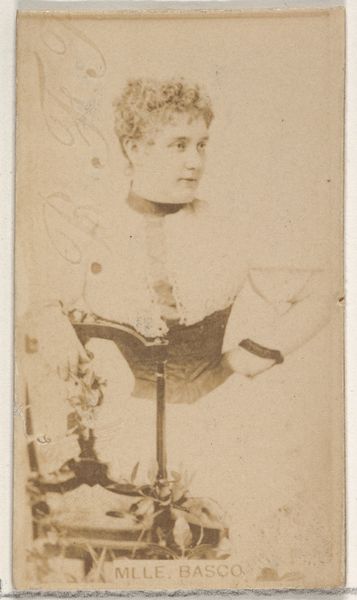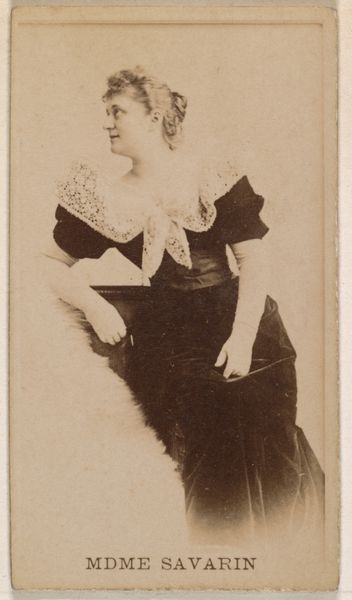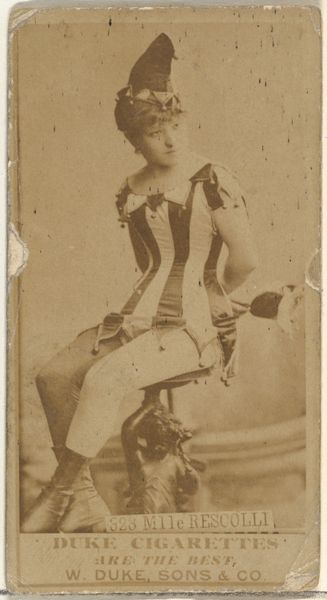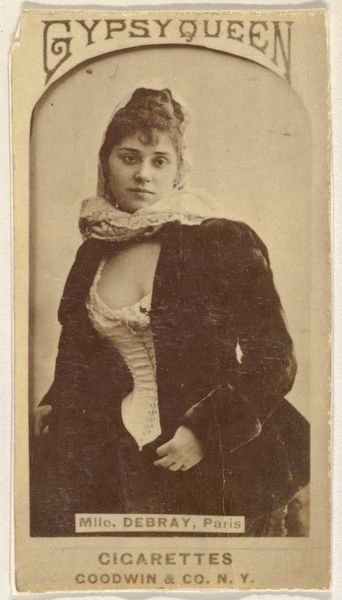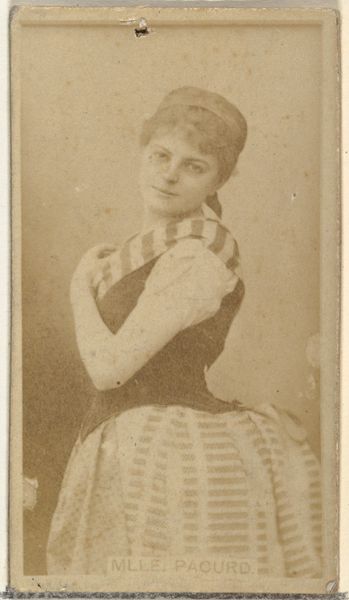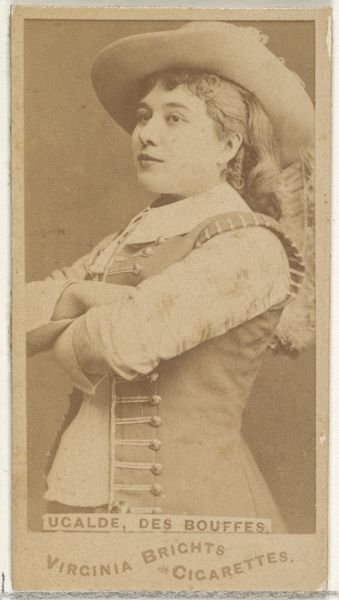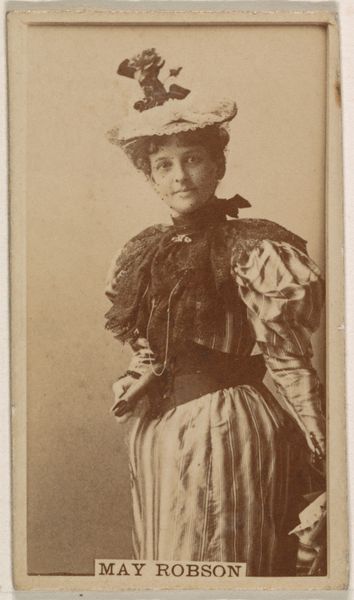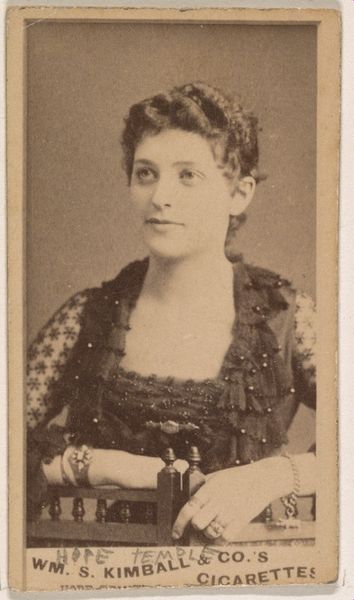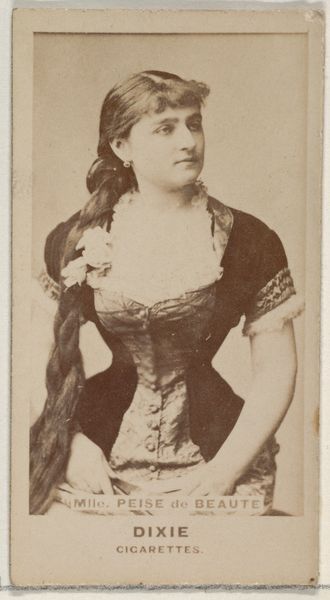
Fräulein Werner, from the Actors and Actresses series (N45, Type 1) for Virginia Brights Cigarettes 1885 - 1891
0:00
0:00
drawing, print, photography
#
portrait
#
drawing
# print
#
photography
Dimensions: Sheet: 2 3/4 x 1 3/8 in. (7 x 3.5 cm)
Copyright: Public Domain
Curator: The work before us, "Fräulein Werner, from the Actors and Actresses series (N45, Type 1) for Virginia Brights Cigarettes" produced between 1885 and 1891 by Allen & Ginter, is currently housed in the Metropolitan Museum of Art. It employs drawing, printmaking, and photography, reflecting an interesting convergence of mediums. What are your initial impressions? Editor: It's striking how staged it feels, even for a portrait. It looks like a very constructed version of femininity, designed to sell a product more than to represent a person. The small size and the rather humble materials also suggest a fleeting image designed for consumption, a disposable portrayal. Curator: Precisely. The portrait acts as a lens through which to examine late 19th-century societal roles and expectations for women in the public eye, particularly actresses. We can dissect how she is presented through this series crafted to glamourize actors and actresses, who held an emergent role in media culture and commodity capitalism. Editor: Absolutely. I think it is essential to consider its production—these cards were distributed with cigarettes, right? So it represents this moment where tobacco companies are literally packaging a feminine ideal, exploiting celebrity culture to encourage consumption. What does it mean when our representations are literally material and marketable? Curator: Good point. The object then becomes an interesting intersection of celebrity, femininity, and commodity culture, revealing that the labor of image-making and performance wasn't isolated to the stage or photographic studio. Her image is further commodified and participates within an intricate exchange between cultural values, labor, and consumption patterns. Editor: Thinking about labor, this card also represents a system of image distribution dependent on exploitative labor practices both in tobacco cultivation and print production. The accessibility belies a complex socioeconomic infrastructure built upon unequal exchange. Curator: Viewing it this way really enhances our ability to connect artistic practices, commodification, and evolving perceptions of femininity, and brings to light some discomforting realities. Editor: For sure. Examining such everyday commercial images unveils how much the so-called "high arts" are inextricable from broader systems of social and economic relations. Hopefully, it will inspire critical thinking and spark dialogue beyond our field.
Comments
No comments
Be the first to comment and join the conversation on the ultimate creative platform.
